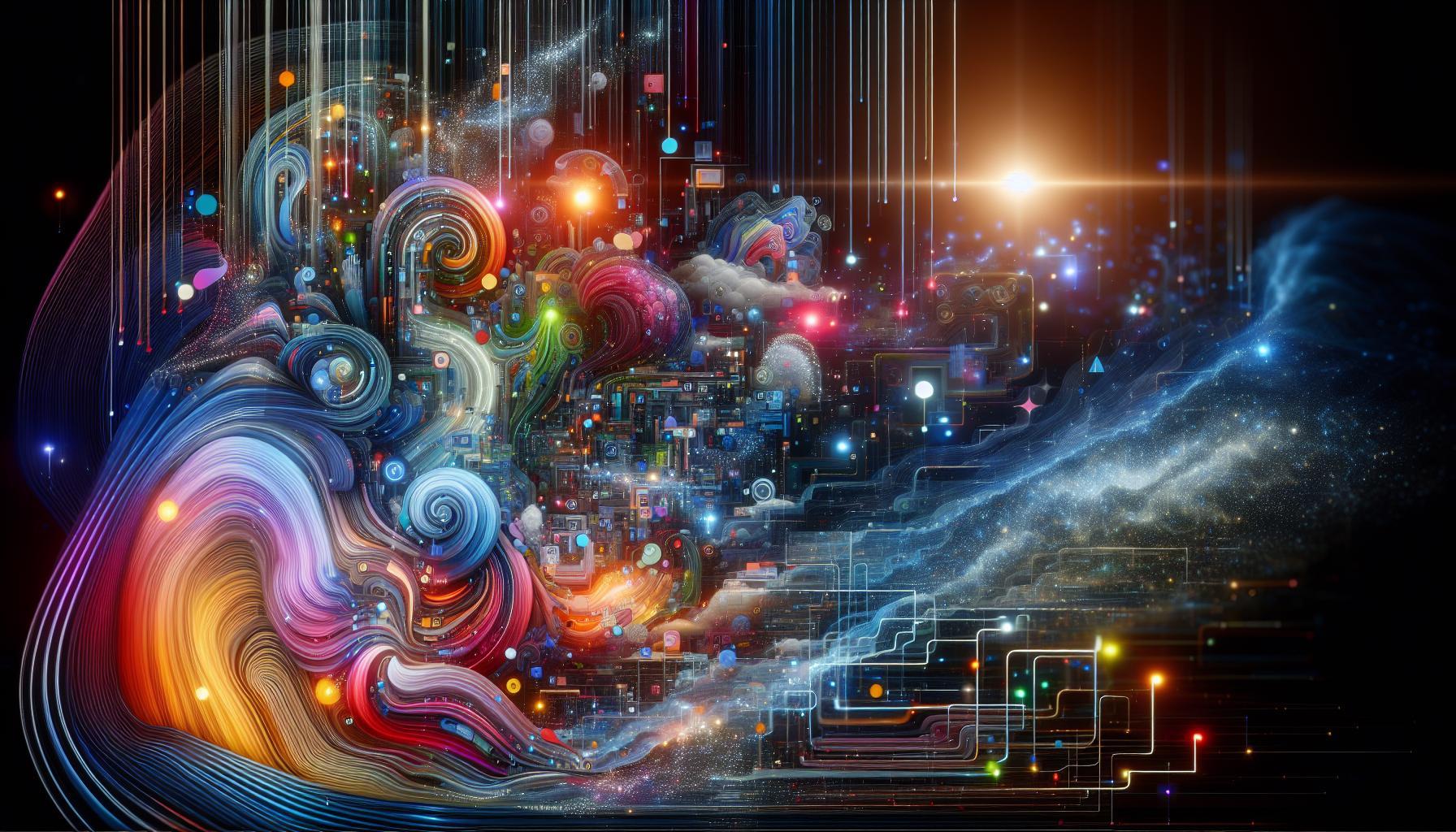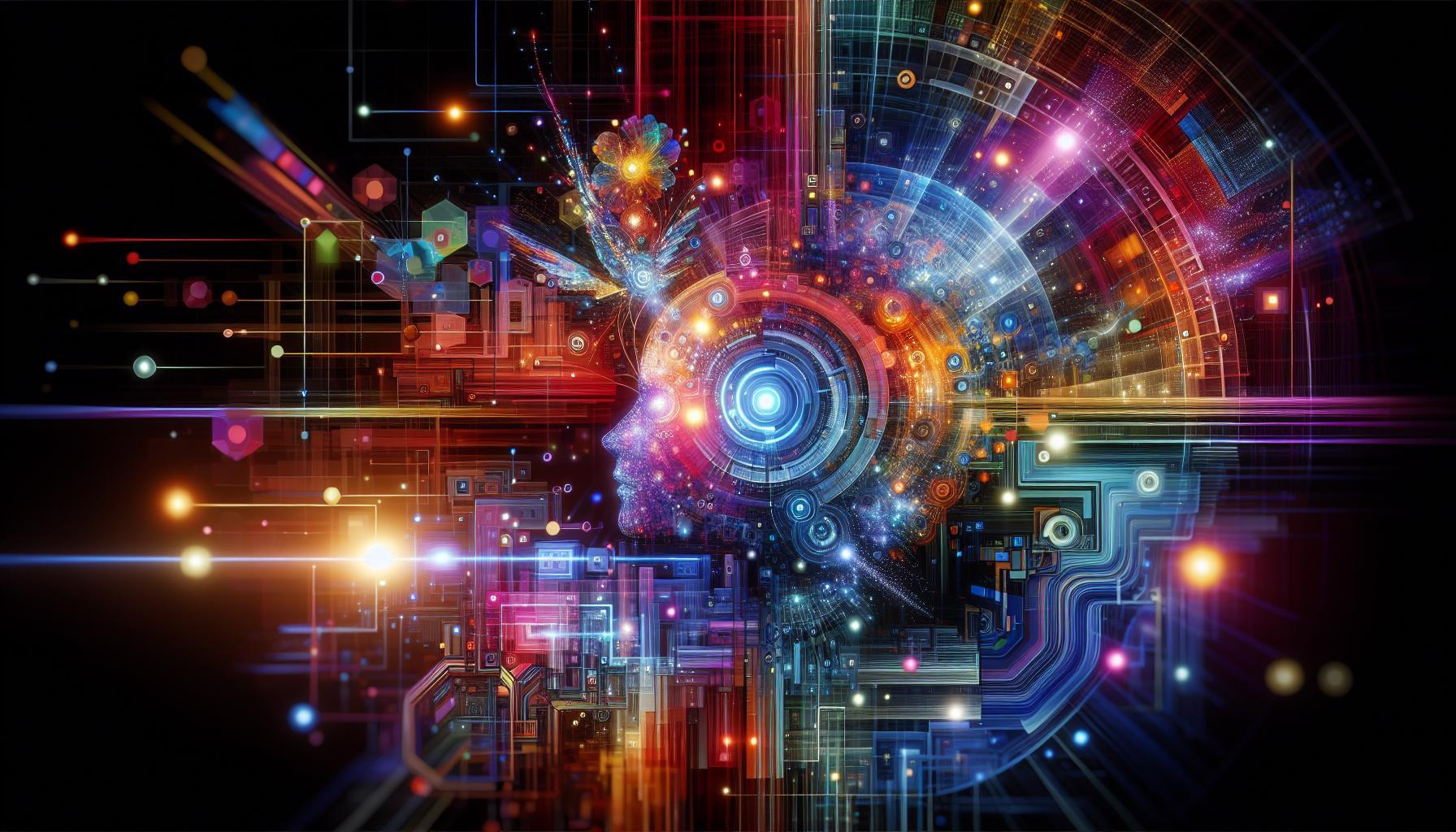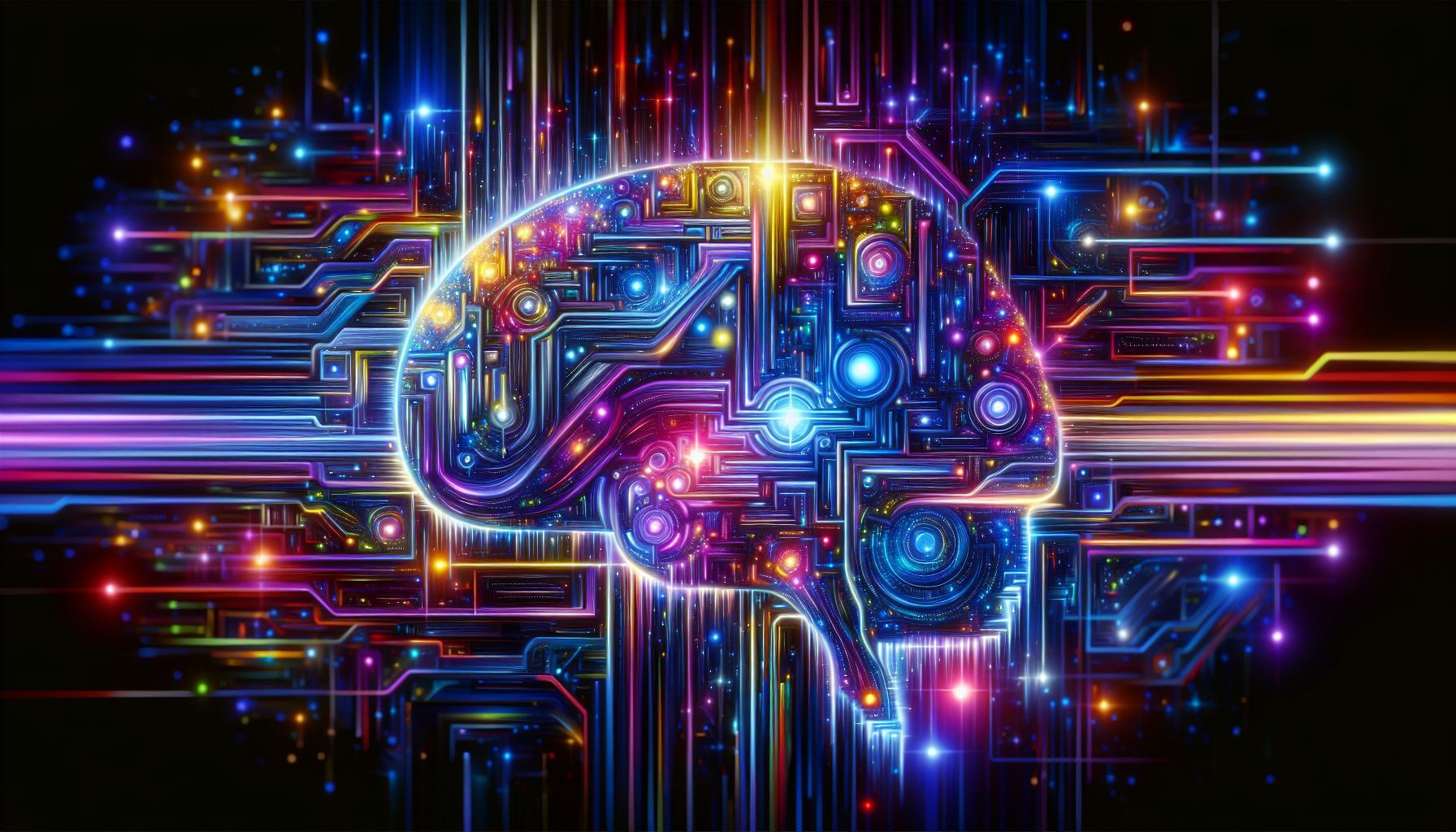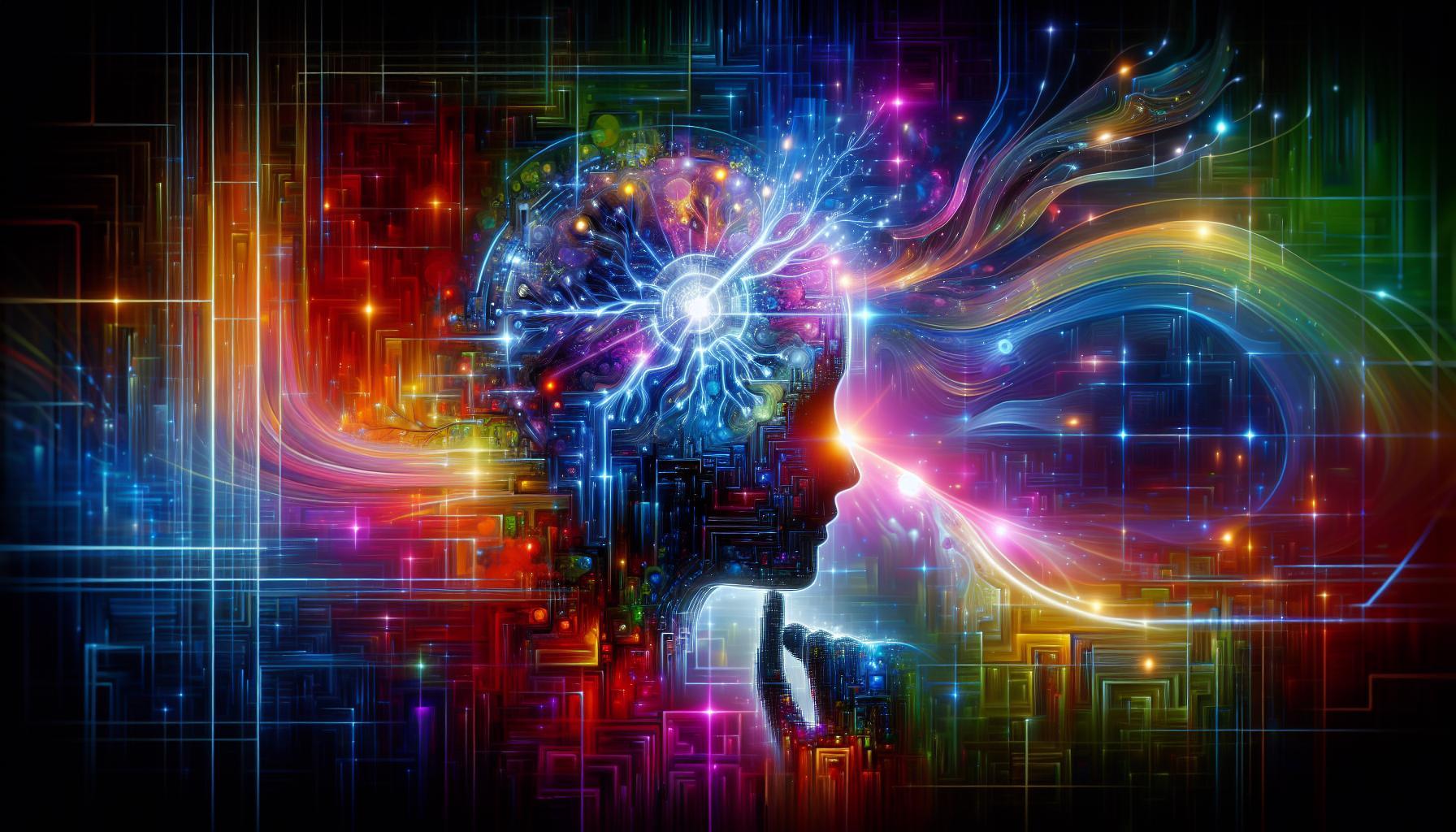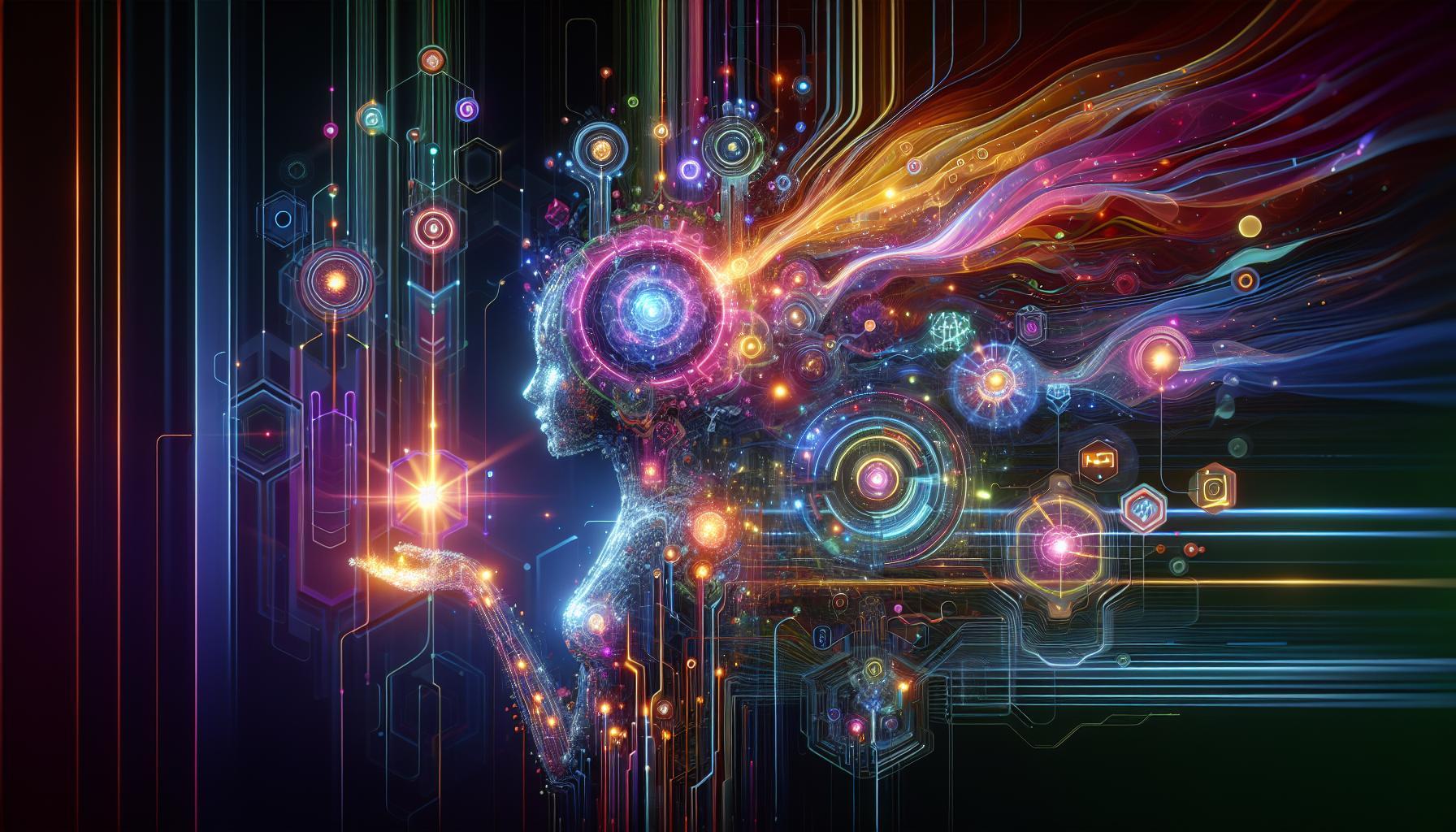Have you ever wondered if you could harness the capabilities of advanced AI image generation without a dedicated GPU? This guide explores how Stable Diffusion can indeed run on CPU, providing a step-by-step installation process for a no-GPU setup. Discover the practical implications and benefits of creating stunning visuals with just your processor!
Understanding Stable Diffusion: What It Is and How It Works
The emergence of Stable Diffusion has revolutionized the domain of text-to-image generation, allowing users to create vivid, high-quality images from simple textual inputs. At its core, Stable Diffusion utilizes advanced machine learning techniques that empower it to interpret and visualize complex descriptions accurately. This capability not only enhances creativity for artists and designers but also opens the door to countless applications in industries such as advertising, gaming, and virtual reality.
How Stable Diffusion Functions
Stable Diffusion operates through a neural network that has been trained on extensive datasets containing paired text and images. This training enables it to grasp the nuances of language and visual representation. When a user inputs text, the model processes the phrase and generates an image that reflects the described scene. The newer versions, like Stable Diffusion 2.0 and the upcoming 3.0, leverage updated architectures and encoders (such as OpenCLIP) to enhance image quality and versatility further, making them more adept at handling multi-subject prompts and complex scenarios [[1]](https://stability.ai/news/stable-diffusion-3” title=”… 3 – Stability …”>ai/news/stable-diffusion-v2-release) [[2]](https://stability.ai/news/stable-diffusion-3).
While the optimal performance of Stable Diffusion typically requires a graphics processing unit (GPU), it is also important to explore whether it can run on a CPU. Users interested in generating images without a dedicated GPU often seek guidance through resources like the “Can Stable Diffusion Run on CPU? No-GPU Installation Guide”. This guide provides practical steps for installation and offers performance insights that may help users achieve satisfactory results, albeit with slower rendering speeds and lower quality compared to GPU setups.
Maximizing the Potential of Stable Diffusion on a CPU
For those working without a GPU, several strategies can enhance the experience of using Stable Diffusion:
- Batch Processing: Reduce the workload by generating multiple images in one session.
- Image Resolution: Lower the resolution of the generated images to speed up processing.
- Pre-Processing: Use simpler, more straightforward prompts to minimize complexity.
These tips may help users produce usable images despite the limitations of a CPU. Understanding these dynamics not only informs better preparation for working with Stable Diffusion but enhances the creative process by setting realistic expectations and utilizing practical solutions.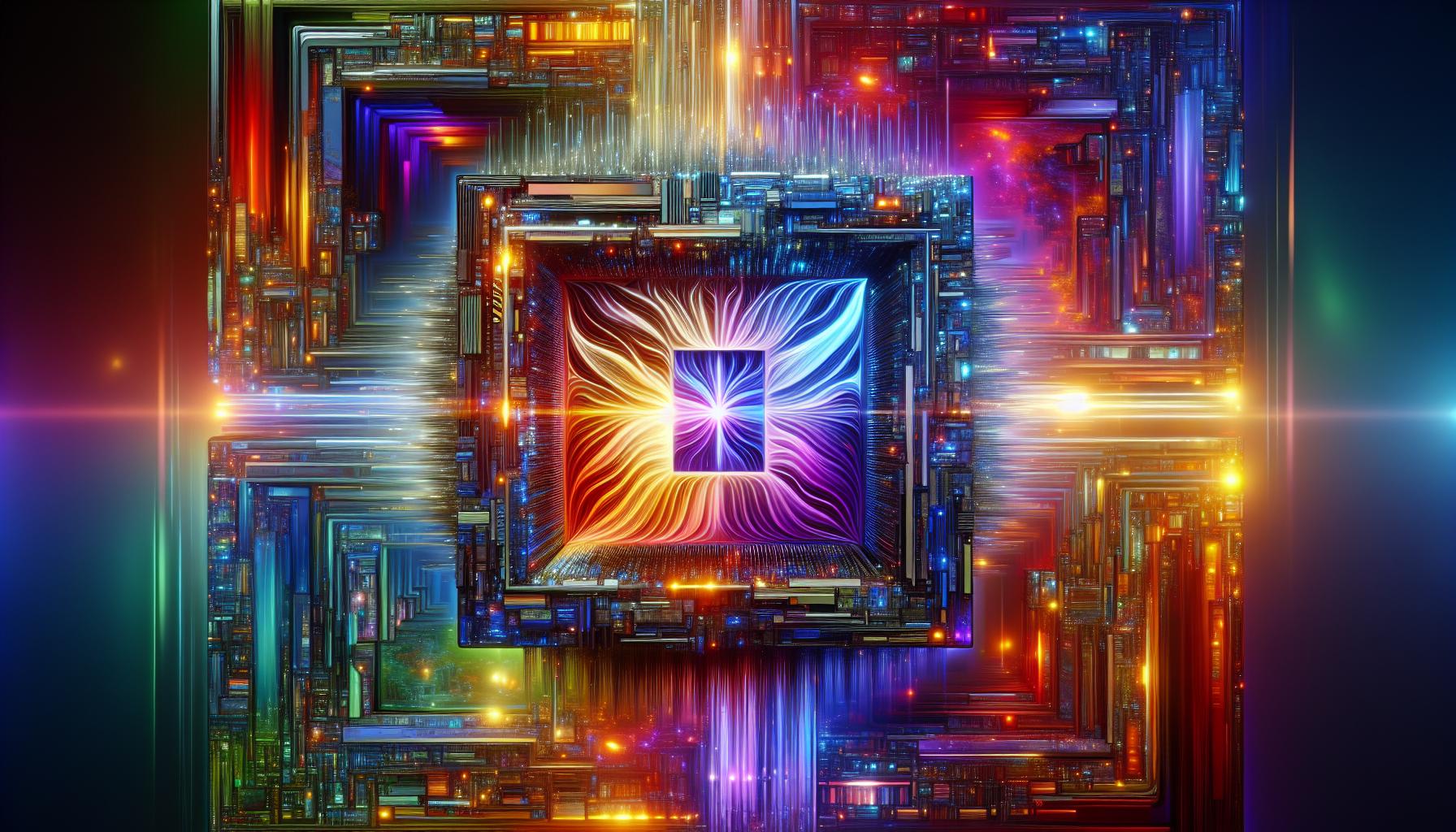
The Limitations of Running Stable Diffusion on a CPU
Running Stable Diffusion on a CPU rather than a GPU presents a unique set of challenges that can significantly impact performance and usability. While the allure of utilizing CPU resources without the overhead of a dedicated GPU might seem appealing, users should be aware of the limitations that accompany this choice. Notably, the processing time required to generate images is typically several times longer on a CPU, which can be a major drawback for anyone looking to create high-quality visuals quickly.
Processing Speed and Time Constraints
When it comes to generating images with Stable Diffusion, speed is essential. Using a CPU for computations means that the image creation process can take considerably longer, often stretching from minutes to hours depending on the complexity of the task and the quality of the desired output. This is particularly relevant for users who want to iterate quickly or create multiple images in a short timeframe. For example:
- Image Generation Times: A prompt that might take 2 seconds to render on a high-performance GPU could take up to 10 times longer on a mid-range CPU.
- Batch Processing: While Stable Diffusion performs well with batch image creation on GPUs, doing so on CPUs can be inefficient and cumbersome, often leading to system overloads.
Memory Limitations and Performance Issues
Another critical limitation of using a CPU is tied to memory management. Generative models like Stable Diffusion require substantial RAM to function effectively, especially when dealing with high-resolution images. CPUs, particularly older models, often struggle with the memory-intensive operations associated with image generation. Users may encounter performance issues such as slow loading times or even crashing if their system runs out of available memory. To navigate these issues, consider the following strategies:
- Optimize Image Size: Reducing the resolution of images can help alleviate memory strain, allowing for more manageable processing times.
- Close Unnecessary Applications: Freeing up RAM by shutting down other running applications can improve performance during the Stable Diffusion process.
GPU Recommendations for Optimal Experience
For those serious about embracing the capabilities of Stable Diffusion, procuring a dedicated GPU is highly recommended. Modern GPUs significantly accelerate the processing time and handle the memory demands posed by rendering high-quality images. To facilitate a smoother experience with Stable Diffusion, explore options that support CUDA or OpenCL, which are essential for optimal performance.
| GPU Type | Approx. Processing Time | Recommended Memory |
|---|---|---|
| NVIDIA RTX 3060 | 2-5 seconds per image | 12 GB |
| NVIDIA RTX 3090 | 1-3 seconds per image | 24 GB |
| AMD RX 6800 XT | 3-6 seconds per image | 16 GB |
Ultimately, while it’s technically possible to run Stable Diffusion on a CPU, the experience is fraught with limitations that may hinder productivity and creativity. For serious content creators, investing in a good GPU will yield a more efficient and enjoyable experience, aligning with the rapid advancements of generative AI technologies.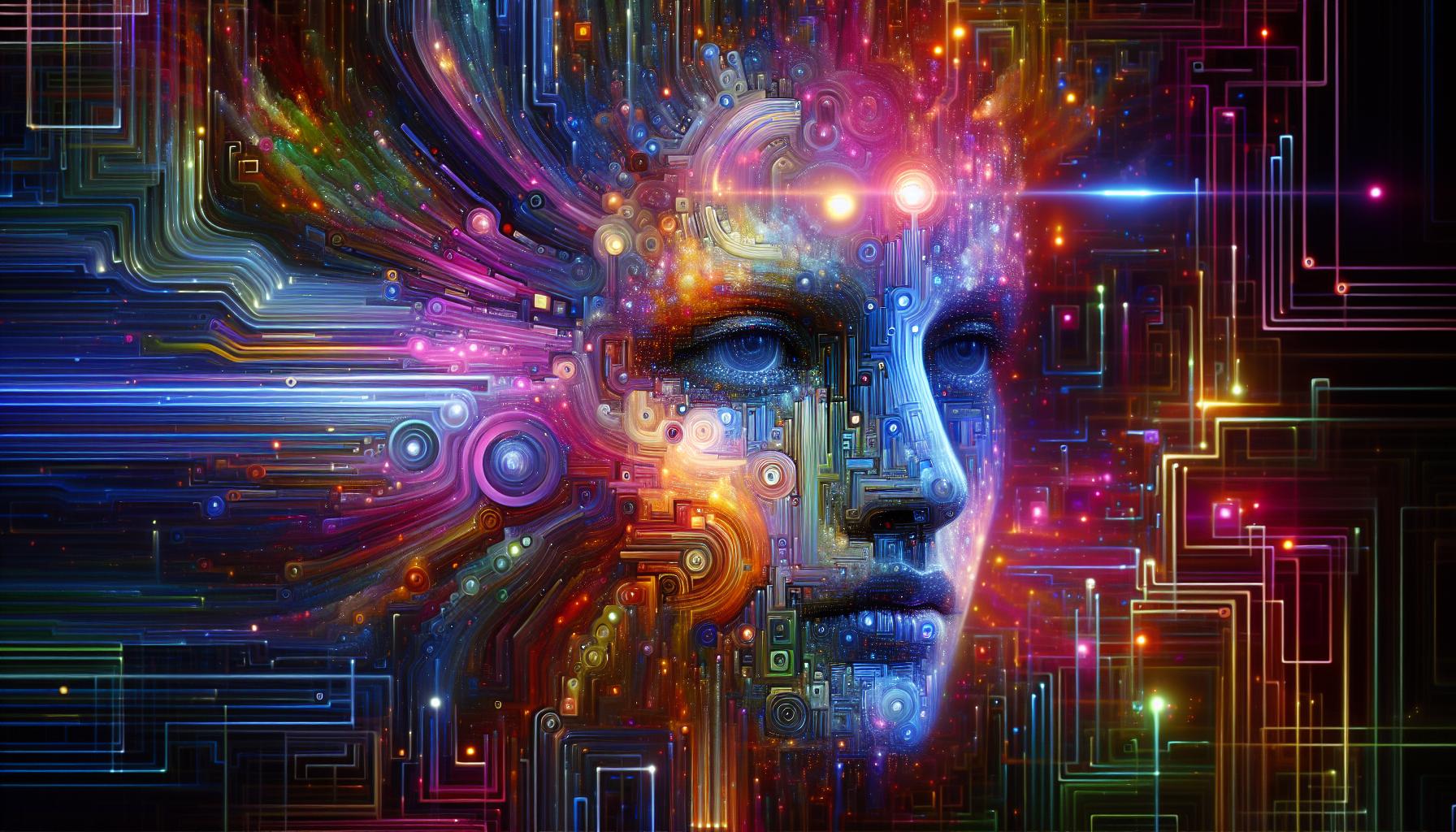
Step-by-Step Installation: Setting Up Without a GPU
Installing Stable Diffusion on a CPU can seem daunting at first, especially with the common perception that powerful GPUs are a necessity for running advanced models. However, it’s absolutely feasible to set up and utilize this AI-driven text-to-image technology without a dedicated graphics card. This guide will walk you through a straightforward installation process, ensuring you can tap into the creative potential of Stable Diffusion, even with limited hardware resources.
Prerequisites
Before diving into the installation, there are a few essential requirements you’ll need to satisfy. Make sure you have the following ready:
- Python: Ensure Python 3.7 or later is installed on your machine. Visit the official Python website for detailed installation instructions.
- pip: This package manager is crucial for installing the required libraries.
- Git: Having Git installed will help you clone the necessary repositories.
- Stable Diffusion Model Files: You will need access to the model files, which can usually be downloaded from the official repository.
Installation Steps
Follow these steps to successfully install and run Stable Diffusion without a GPU:
- Clone the Repository: Open your command line interface (CLI) and execute the following command to clone the Stable Diffusion repository. This will bring all necessary files to your local machine:
bash
git clone https://github.com/CompVis/stable-diffusion
cd stable-diffusion
- Create and Activate a Virtual Environment: It’s best practice to create a virtual environment to manage dependencies without affecting other projects. Run these commands in your CLI:
bash
python -m venv venv
source venv/bin/activate # On Windows use venvScriptsactivate
- Install Requirements: Now, you can install the required packages. Use pip to install everything specified in the
requirements.txtfile:
bash
pip install -r requirements.txt
- Download Model Weights: Ensure that you download the model weights from the official sources. Place the downloaded model files in the appropriate directories as required by the project.
- Run the Model: After everything is set up, you can start generating images. Use the command line to invoke Stable Diffusion with your desired prompts, adjusting settings as necessary for your CPU configuration.
Performance Considerations
Running Stable Diffusion on a CPU might lead to longer processing times compared to GPU setups, especially for complex tasks or higher resolutions. It’s essential to manage expectations, as generating images may take significantly longer.
Here are a few tips to optimize performance on a CPU:
- Limit Image Resolution: Start with lower resolutions to reduce computation time while you become familiar with the model.
- Use Simple Prompts: Simplifying your input can yield faster results and require less processing power.
- Monitor Resource Usage: Keep an eye on your system’s performance during image generation to ensure stability.
With this guide, anyone should be able to set up and run Stable Diffusion without a GPU, exploring the exciting possibilities of text-to-image generation right from their CPU. Whether it’s for artistic endeavors or just for testing the capabilities of AI, the potential is limitless!
Optimizing Performance: Tips for Using Stable Diffusion on CPU
Utilizing Stable Diffusion without a GPU is a challenge that many enthusiasts face, but it is entirely possible with some smart optimizations. For those wondering if *Stable Diffusion can run on CPU?* the answer is a resounding yes, as outlined in various guides exploring no-GPU installation techniques. However, running such demanding software on a CPU requires careful adjustments and clever strategies to achieve satisfactory results.
To enhance processing efficiency and ensure smoother execution, consider the following tips:
Selection of Models
Choosing the right models can significantly impact performance. Lighter models or optimized versions specifically designed for CPU usage can streamline processing. For example:
- Use lower resolution models when generating images to decrease processing time.
- Explore alternative architectures tailored for CPU performance, such as quantized models.
Batch Processing
Instead of running tasks individually, explore batch processing. This method allows the CPU to handle multiple instances simultaneously, improving overall throughput. Adjust your Stable Diffusion settings to queue several images for generation at once, thus maximizing the computational load during execution.
Environment Configuration
The way you configure your environment can also make a difference. Here are some actionable steps:
- Ensure your Python installation is set up with optimized libraries, such as NumPy and PyTorch, that are compatible with CPU usage.
- Consider using platform-specific optimizations like MKL (Math Kernel Library) or OpenBLAS to improve mathematical computations.
By adopting these strategies, those running Stable Diffusion on a CPU can maximize performance without the need for high-end GPUs. Through careful management and configuration, generating impressive imagery becomes feasible, even under constrained hardware scenarios.
Troubleshooting Common Issues in CPU-Based Stable Diffusion
When utilizing CPU-based installations of Stable Diffusion, users often encounter a unique set of obstacles that can hinder performance and output quality. Given that Stable Diffusion was originally optimized for GPU usage, running it solely on a CPU can lead to potential issues, but troubleshooting these can enhance your experience significantly. Below are some common problems and their solutions tailored to those working with a CPU setup in the context of Stable Diffusion.
Performance Lag
One of the most significant challenges when using Stable Diffusion on a CPU is the noticeable lag during image generation. This can occur due to the inherent limitations of CPU processing power compared to GPUs. To mitigate this:
- Adjust Resolution: Lowering the resolution of the generated images can drastically improve processing speed. If you typically run at 512×512 pixels, consider experimenting with 256×256 or lower for quicker results.
- Batch Size: Reduce the batch size to ensure your CPU doesn’t become overwhelmed. A batch size of 1 can lead to a more manageable load.
- Optimize Your Environment: Close any unnecessary applications and processes running in the background to free up CPU resources.
Memory Errors
CPU installations may also face memory-related issues, especially if your machine has limited RAM. Encountering memory errors can interrupt your creative flow. To address this:
- Increase Virtual Memory: Adjust your system settings to increase the virtual memory page file. This can help your CPU handle larger processes even with limited RAM.
- Optimize Code Execution: Look into using optimized libraries or configurations specifically designed for CPU usage in deep learning frameworks.
- Monitoring Tools: Utilize system monitoring tools to track memory usage and identify when you are approaching the limits.
Unexpected Crashes
Running CPU-based Stable Diffusion may lead to unexpected crashes or freezes, particularly during intensive tasks. To reduce this risk:
- Error Logs: Regularly check the output logs for any errors or warnings that could indicate the cause of instability.
- Software Updates: Ensure that you are using the latest versions of Stable Diffusion and the underlying libraries, as updates often contain crucial bug fixes and performance improvements.
- Isolation of Components: When using third-party extensions or plugins with Stable Diffusion, isolate them by disabling one at a time to identify any that might cause crashes.
By understanding and addressing these common issues, users can enhance the performance of their CPU-based installations of Stable Diffusion. Following these practical troubleshooting tips not only paves a smoother path for creative exploration but also optimizes the functionality of this powerful text-to-image tool without the need for high-end hardware.
Exploring Alternatives: Other Solutions for AI Image Generation
AI image generation technologies have exploded in popularity, offering new creative possibilities for artists and developers alike. While Stable Diffusion is a notable option, it’s not the only player in the field. Those exploring alternatives should consider several compelling solutions, each with unique features and capabilities that cater to diverse needs, especially in scenarios where GPU resources may be limited as outlined in the guide on whether Stable Diffusion can run on CPU.
Here are some top alternatives to consider:
- DALL·E 2 and DALL·E 3: OpenAI’s DALL·E models are known for generating highly detailed images from textual descriptions. DALL·E 3, the latest iteration, improves upon its predecessor by enhancing the quality of generated images and expanding the range of styles and concepts it can interpret. Users can access the DALL·E API to generate images with various text prompts, and it supports up to 4,000 characters, making it versatile for detailed image creation [[1]](https://cookbook.openai.com/articles/what_is_new_with_dalle_3).
- Midjourney: This AI tool focuses on creating artistic images, catering particularly to creative professionals. Its community-driven platform allows users to refine their prompts interactively. Midjourney is widely praised for its unique aesthetics and is effective for projects requiring a more artistic touch.
- Craiyon (formerly known as DALL·E Mini): This is a free, web-based tool for generating images from text prompts. While it may not produce images with the quality of DALL·E or Midjourney, its ease of access and minimal resource requirements make it a good starting point for casual users or those exploring quick ideas.
- DeepAI: Provides a variety of image generation technologies, including a visual art generator, cartoonizer, and text-to-image API. DeepAI is beneficial for developers looking to incorporate multiple AI functionalities into their applications without the need for significant computational power.
Considerations When Choosing an Alternative
When selecting an AI image generation tool, consider your particular requirements, such as image quality and the nature of the content you wish to create. Some platforms like DALL·E may offer more advanced features that come with API costs, while others like Craiyon are cost-effective for casual usage.
Moreover, if your primary concern revolves around CPU compatibility, tools like DeepAI can be advantageous due to their lighter system requirements. Always review the specific capabilities of each platform and consider readiness to invest time in learning how to best utilize them effectively. Using these alternatives can expand your creative toolkit and enhance the diversity of images you produce, even if you are tied to CPU resources as noted in the discussions on whether Stable Diffusion can run on CPU.
Real-World Use Cases: When CPU-Based Generation Makes Sense
The ability to use Stable Diffusion effectively without a dedicated GPU can be pivotal, especially for users with limited hardware resources. While GPUs significantly boost performance in machine learning tasks, there are various real-world scenarios where relying on a CPU for inference can still yield satisfactory results. This opens up the potential for artists, developers, and enthusiasts who may not have access to powerful graphic hardware to explore AI-generated images.
Common Situations for CPU Usage
Many users find themselves in situations where using a CPU-based approach makes logical sense:
- Access to Older Hardware: For those utilizing older laptops or desktops that lack a dedicated GPU, Stable Diffusion can still run if modest performance expectations are set. Upgrading to a newer CPU might be a more feasible or cost-effective strategy than a full system upgrade.
- Lower Power Consumption: In environments where power efficiency is crucial-like mobile devices or embedded systems-CPU-based generation can conserve energy compared to high-performance GPUs.
- Development and Testing: Developers testing models or running quick iterations may prefer CPU usage because it allows for easier debugging without the added complexity of GPU dependencies.
- Seamless Integration: Applications running in environments that prioritize compatibility over raw performance can utilize CPU-based generation, minimizing orchestration challenges encountered when integrating multiple hardware accelerators.
Performance Limitations and Expectations
When opting for a CPU-based installation of Stable Diffusion, it’s essential to understand the trade-offs. While the process may be slower, particularly with extensive datasets, users can still achieve reasonable outputs by managing their expectations and workflow efficiently.
| Aspect | CPU-Based Performance | GPU-Based Performance |
|---|---|---|
| Processing Time | Slower, depending on the model | Fast, with real-time capabilities |
| Resource Requirements | Lower, works with most systems | Higher, requires dedicated hardware |
| Output Quality | Acceptable for basic applications | High-quality outputs, optimized for graphics |
Implementing CPU-based solutions allows beginners and casual users to dive into the world of AI art without significant investment or technical barriers. By leveraging this flexibility, it becomes possible to explore creative avenues and utilize technologies like Stable Diffusion in various practical scenarios, even with limited resources.
Enhancing Your Workflow: Tools and Resources for CPU Users
To harness the capabilities of Stable Diffusion on CPU, users can explore a range of tools and resources designed to optimize performance and streamline workflows. While running on a CPU may present challenges, especially in data-intensive tasks like text-to-image generation, the right approaches can make the experience viable and efficient.
Key Tools for CPU Users
Utilizing certain frameworks and libraries can significantly enhance your experience with Stable Diffusion on a CPU. Consider these essential tools:
- Hugging Face Transformers: This library offers a user-friendly interface for deploying models like Stable Diffusion without requiring a GPU, enabling smoother operation and integration.
- Pillow: A Python Imaging Library that is perfect for image processing tasks before and after generating images with Stable Diffusion, ensuring compatibility and quality.
- PyTorch: While primarily GPU-focused, PyTorch can be configured to run effectively on CPUs. With updated versions, performance for text-to-image conversion has improved, allowing better handling of tasks normally reserved for GPUs.
Optimizing Performance
When you’re working with CPU resources, maximizing efficiency is crucial. Here are some practical strategies to consider:
- Batch Processing: Instead of processing images one at a time, group tasks into batches. This method can help optimize resource usage and reduce the total time spent on generating content.
- Reduced Image Resolutions: Generating lower-resolution images can save processing time significantly. Consider the final use case of your images and adjust settings accordingly to strike a balance between quality and performance.
- Incremental Updates: If you’re working on repeated tasks or need to modify existing images, make use of incremental changes to reduce the computation needed for full re-renders.
Community Resources and Support
Leverage the wealth of knowledge available from the community. Engaging with forums and discussion groups focused on Stable Diffusion can provide insights and tips for optimizing workflows on CPU setups. Platforms like GitHub and Reddit often host discussions about best practices, troubleshooting, and innovative uses of the technology.
Incorporating these approaches can enhance your workflow with Stable Diffusion, even in a non-GPU context. From utilizing compatible libraries to optimizing processing techniques, CPU users can effectively participate in this dynamic field of AI-driven creativity. Explore the possibilities, and soon you’ll see how achievable and rewarding generating images with Stable Diffusion on CPU can be.
Faq
Can Stable Diffusion Run on CPU? No-GPU Installation Guide?
Yes, Stable Diffusion can run on a CPU, but performance will be significantly slower compared to a GPU. The No-GPU Installation guide helps you set it up and understand limitations.
Running Stable Diffusion on a CPU is possible for testing or light usage. However, tasks like generating high-resolution images may take much longer and become less efficient. For detailed setup instructions, visit our installation guide.
What are the system requirements for running Stable Diffusion on CPU?
You need a modern CPU, at least 16 GB of RAM, and sufficient disk space (around 10 GB). Stable Diffusion is memory-intensive, so higher specifications will improve performance.
Older CPUs may struggle with processing times, especially for large models. Ensure your system has the necessary dependencies installed, as outlined in our requirements guide.
Why does Stable Diffusion perform poorly on CPU?
Stable Diffusion is designed for parallel processing, which GPUs excel at. CPUs process tasks sequentially, resulting in slower image generation and longer wait times.
Image generation tasks in AI often rely on the ability to handle multiple calculations simultaneously, which is where GPUs shine. If you need better performance, consider upgrading to a dedicated GPU.
Can I use Stable Diffusion for image generation on a low-end CPU?
Using Stable Diffusion on a low-end CPU is possible, but your experience may be suboptimal. Expect longer rendering times and potentially limited performance.
For those on low-end systems, consider generating smaller images or using lower settings. You can also look for optimized models designed to run better on CPUs. Check our performance tips for advice.
What alternative methods exist for running Stable Diffusion without a GPU?
Besides local installation on a CPU, you can explore cloud services that provide GPU resources for a fee, allowing faster and more efficient image generation.
Many platforms offer access to Stable Diffusion with a pay-as-you-go model, making it accessible without needing a powerful local machine. This also allows users to experiment without upfront hardware costs.
How long does it take to generate an image using Stable Diffusion on CPU?
Generating an image on a CPU can take anywhere from several minutes to hours, depending on your CPU’s power, the image’s resolution, and the model’s complexity.
For example, a high-resolution image may take significantly longer than a lower-resolution one. Keep patience and consider adjusting settings to find a balance between quality and time.
Is it worth running Stable Diffusion on CPU for beginners?
For beginners experimenting with AI art, running on a CPU can be a good start to understand the tool and its capabilities without high investment.
Once you grasp the usage, you might want to consider transitioning to a more efficient setup to create more complex images quickly. Explore our getting started guide for more insights.
In Summary
In conclusion, while running Stable Diffusion without a GPU presents unique challenges, it’s absolutely possible with a computer’s CPU. We’ve explored key aspects such as system requirements, installation steps, and efficient configuration techniques to help guide your journey. By understanding the fundamentals of AI image generation and applying the methods outlined in this article, you’re now equipped to start experimenting with your own AI art creations.
Remember, the world of AI is ever-evolving, and your curiosity can unlock innovative possibilities. We encourage you to dive deeper, experiment with various settings, and engage with the community of creators sharing their insights and experiences. Stay curious and confident on your path to mastering AI visual tools; the canvas is yours to explore!

